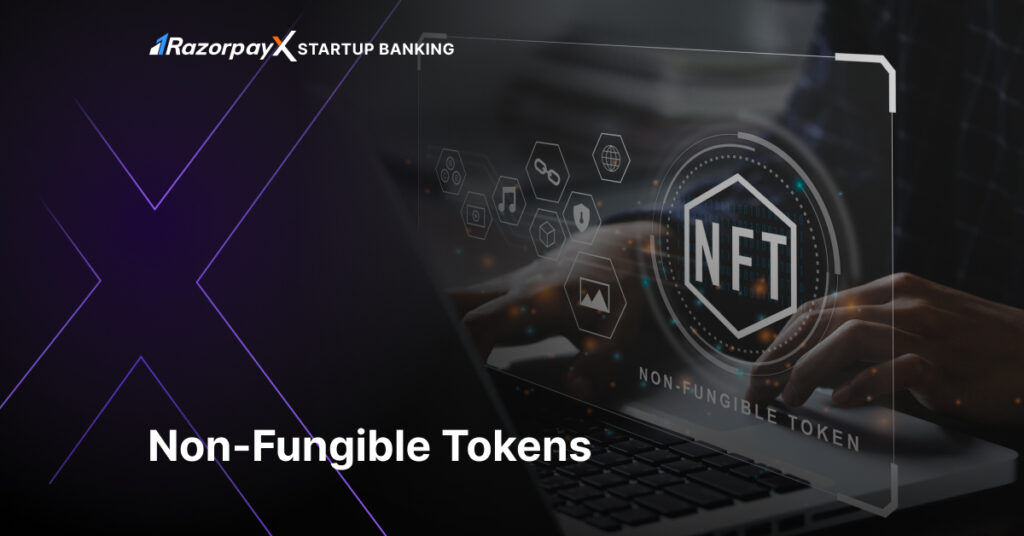Remember this image? This illustration of a monkey is one of the most famous NFTs ever. If you’re confused about what an NFT is, you’re at the right place. Let’s unwrap the confusing world of NFTs once and for all.
Table of Contents
What is NFT?
NFTs, which stands for Non-Fungible Tokens, are unique, digital assets stored on a blockchain. This blockchain technology is also used in cryptocurrencies like Bitcoin.
NFTs are generally in the form of artwork, music, photos or videos and can be bought and sold online. They have become more popular in recent years, with popularity on social media and the internet.
The most important feature of an NFT is that it is non-fungible. Fungibility is the property of an asset or commodity that allows it to be indistinguishable from others of the same kind and value. Let’s understand fungibility a little better.
What is Fungibility?
“Fungibility” means that something can be exchanged for another thing of the same value. A ten-rupee note, for example, can be exchanged for another ten-rupee note. A dollar will always be equal to another dollar. Cryptocurrencies and money are always fungible.
Non-fungibility, therefore, means that an item is so unique that it cannot be exchanged for any other item. The Mona Lisa painting, for example, cannot be exchanged for any other painting, or even an exact replica of itself.
NFTs, or non-fungible tokens are unique, like works of art, and therefore non-fungible. You cannot exchange one NFT for another because both their values are different.
The second most important feature of an NFT is that it is stored on a blockchain. Here’s a breakdown of how blockchain works.
What is Blockchain

Blockchain is a technology where information can be stored digitally as completely anonymous, untraceable blocks. It is a digital record of transactions, with each record containing information about the next.
This chain is constantly updated and secured with cryptography, making it virtually impossible to tamper with. The distributed nature of blockchain also makes it secure, as it is not stored in one place, but rather on multiple computers all over the world.
It is used to store cryptocurrencies like Bitcoin and Ethereum. The same technology is also used to store and transfer ownership of NFTs.
How NFT Works
People who want to buy or sell NFTs do so on online marketplaces like OpenSea, Rarible, and SuperRare.
Once buyers identify something they like, they purchase it with cryptocurrencies like Ethereum, which are stored in digital wallets.
The creation of a new NFT is called “minting”.
Today, non-fungible tokens are mostly used as status symbols or collectables – most we hear about in the media are artwork or audio that people buy the same way that people buy paintings to display in their homes.
But NFTs also have a number of other uses. Since they are stored entirely online, the chances of theft or forgery are almost zero. It also helps enable market efficiency and establishes a direct link between creator and consumer.
NFTs can represent any asset, as long as it can be digitized. Real-life assets like real estate and clothes can be sold digitally – Nike’s system CryptoKicks is used to verify the authenticity of sneakers that people buy in real life.
Examples of NFTs
Art
The most common examples of NFTs are artwork. There are many popular artworks: Bored Apes, EtherRocks, and Everyday: the First 5000 Days.
Film
NFTs have also been used a medium to sell actual films as well as movie tickets. A few limited-edition tickets to Deadpool 2 were sold before the movie was released as part of promotions. Quentin Tarantino, director of Pulp Fiction sold uncut scenes from the movie as seven NFTs.
Memes
A number of popular memes like Nyan Cat and Doge have been sold as NFTs, as a way for the creator of the meme to assert ownership and earn royalties.
Real Estate
Recently, real estate both online and in the physical world are being sold as NFTs – people can purchase pieces of land and assert ownership via digital smart contracts. There are entire worlds, called metaverses being sold digitally!
Future of NFTs
While NFTs are today only being used as status symbols or for entertainment purposes, there is a lot of future potential.
Digitization is quickly becoming the need of the hour, with things that were once confined to the real world being digitized.
A good example of this digitization is banking. Banking has traditionally been done out of physical bank branches – which include long, tedious processes and paperwork.
With the advancement of technology, banking and finance has also been digitized. Today, leading the forefront of innovation for banking are neobanks like RazorpayX.
FAQs
What is an NFT?
NFTs, or non-fungible tokens are unique identifiers that are stored on a blockchain. They are generally in the form of artwork, music, photos or videos and can be bought and sold.
Why do people buy NFT?
NFTs today are mostly used as status symbols or collectibles – most NFTs we hear about in the media are artwork or audios that people buy the same way that people buy paintings to display in their homes.
How does an NFT make money?
NFTs are sold by their creators online. Assets like paintings, music and movies that can be digitized are sold on NFT marketplaces like OpenSea and Rarible.
How can I buy an NFT?
People who want to buy or sell NFTs do so on online marketplaces like OpenSea, Rarible, and SuperRare. Once buyers identify an NFT they like, they purchase it with cryptocurrencies like Ethereum, which are stored in digital wallets.



